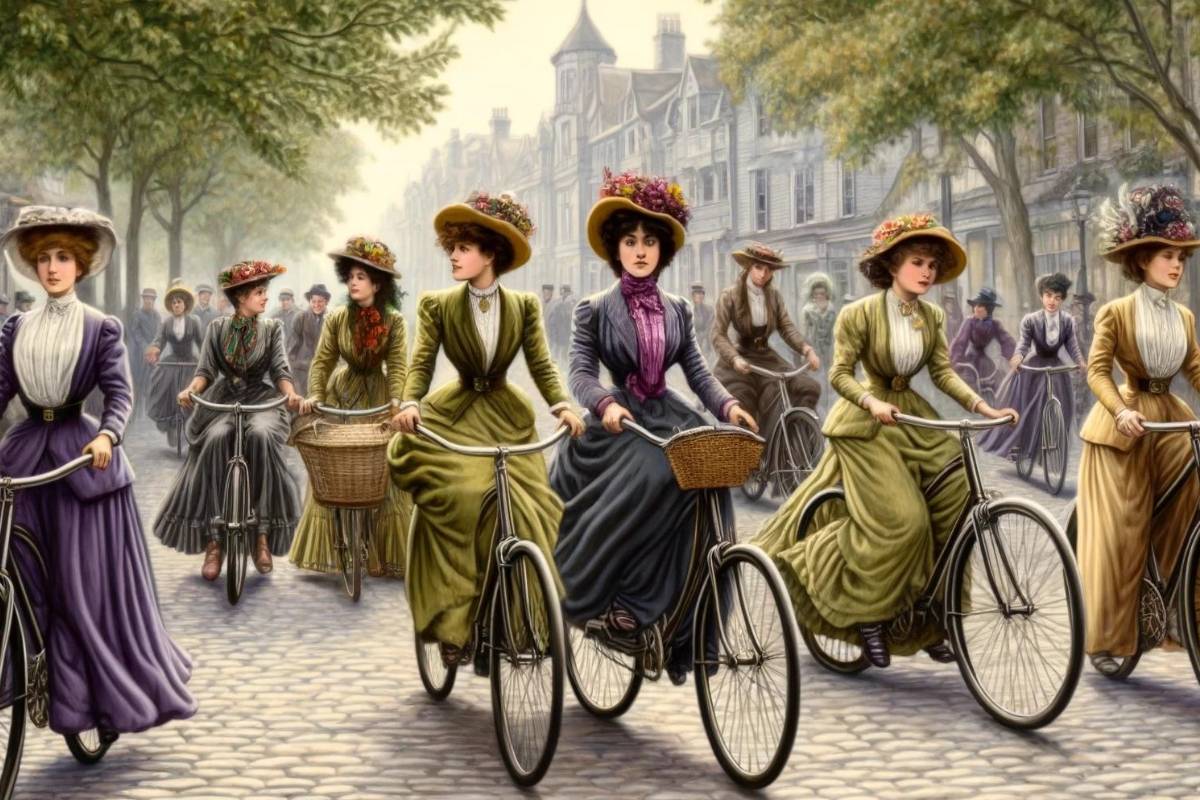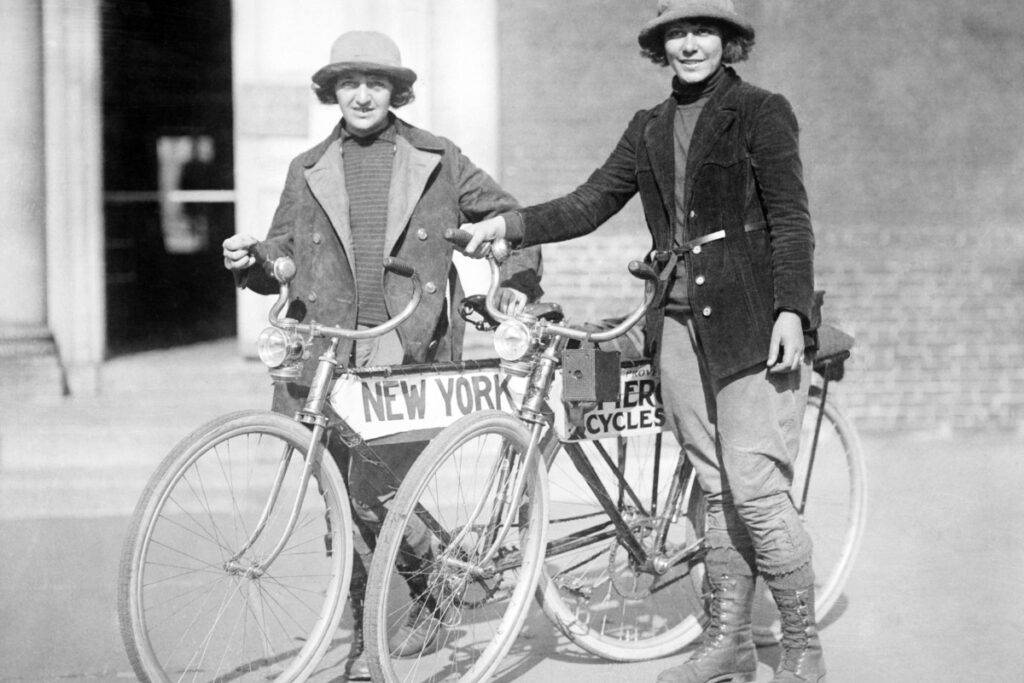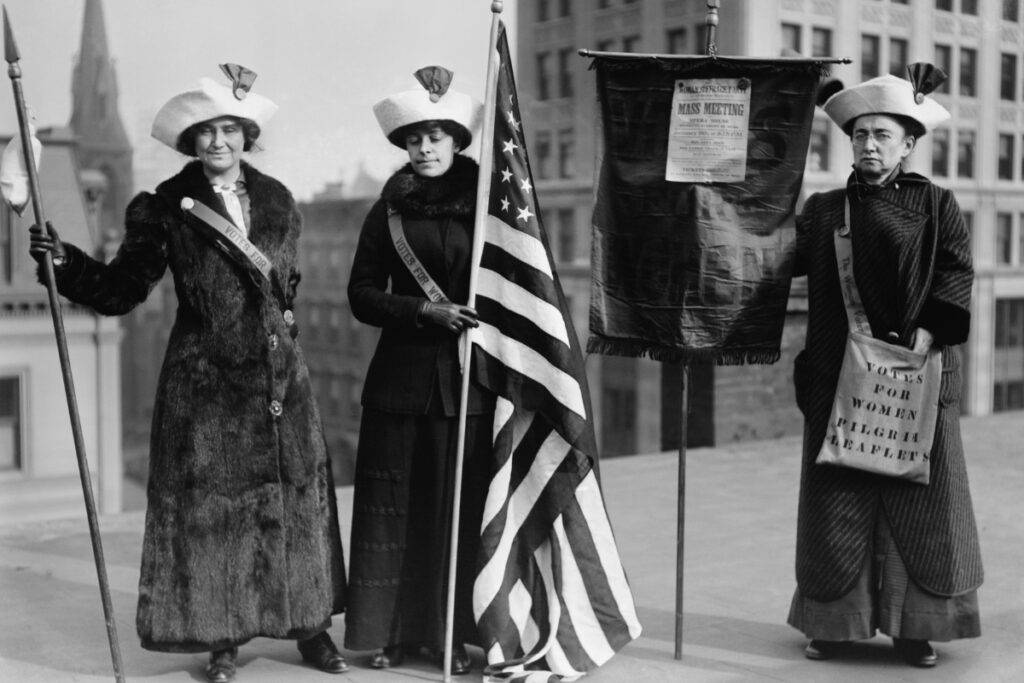
In the late 19th century, a time marked by rigid social norms and restrictive expectations for women, a simple invention—the bicycle—became an unexpected symbol of freedom and change.
The women’s suffrage movement, which fought tirelessly for women’s rights to vote and have equal standing in society, found an unlikely ally in this new mode of transportation.
The bicycle not only challenged the status quo but also empowered women in ways that were both practical and profound.
Breaking Away from Victorian Restrictions
During Victorian times, women were expected to wear heavy, cumbersome dresses and corsets that limited physical activity and were a daily reminder of the restrictive roles women were supposed to play in society.
Enter the bicycle: a tool that required practical attire to ride. Women cyclists started wearing bloomers—a type of baggy pants that were considered scandalous at the time—because they were much more practical for riding.
This shift in fashion was not just about comfort but was a bold statement against the restrictive clothing that women were expected to wear.
By choosing bloomers over dresses, women cyclists were taking control over their own mobility and, symbolically, their own lives.

Susan B. Anthony and the Bicycle
Susan B. Anthony, a leading figure in the women’s suffrage movement, recognized the profound impact of the bicycle on women’s liberation.
She famously stated that the bicycle did “more to emancipate women than anything else in the world.”
This was because the bicycle made it possible for women to move freely and independently in a way that they had never been able to before.
With a bicycle, a woman could travel on her own to work, to social engagements, or just for pleasure, without relying on a man or public transportation.
This newfound mobility was a tangible form of freedom that contributed significantly to the growing sense of independence among women at the time.
The Bicycle as a Symbol of Equality
The bicycle‘s impact went beyond practical mobility. It became a symbol of equality and empowerment.
As more and more women took up cycling, it became a visible sign of changing attitudes towards women’s roles in society.
The bicycle suggested that women were not just capable of handling new technology but were also entitled to the same freedoms enjoyed by men, including the freedom to vote.
The sight of women riding bicycles became intertwined with the broader movement for women’s rights, illustrating how technology and social change are deeply connected.

Lasting Impact on Society
The relationship between women and bicycles during the suffrage movement highlights a key point: technology can be a powerful agent of social change.
The bicycle not only changed how women moved through the world but also how they saw themselves and their place in society.
It supported a shift towards more practical and equal considerations in clothing, which reflected broader desires for social equality.
The story of women, bicycles, and the suffrage movement is a compelling example of how even the simplest technologies can play a significant role in cultural shifts.
For women in the late 19th century, bicycles were more than just a way to get around; they were a path to freedom, a challenge to societal norms, and a ride towards equality.
ALSO READ: What is “Bicycle Face” (and Did it Stop Women Cycling)?
Share the  Love
Love
The post How Bicycles Paved the Way for Women’s Rights appeared first on Discerning Cyclist.
